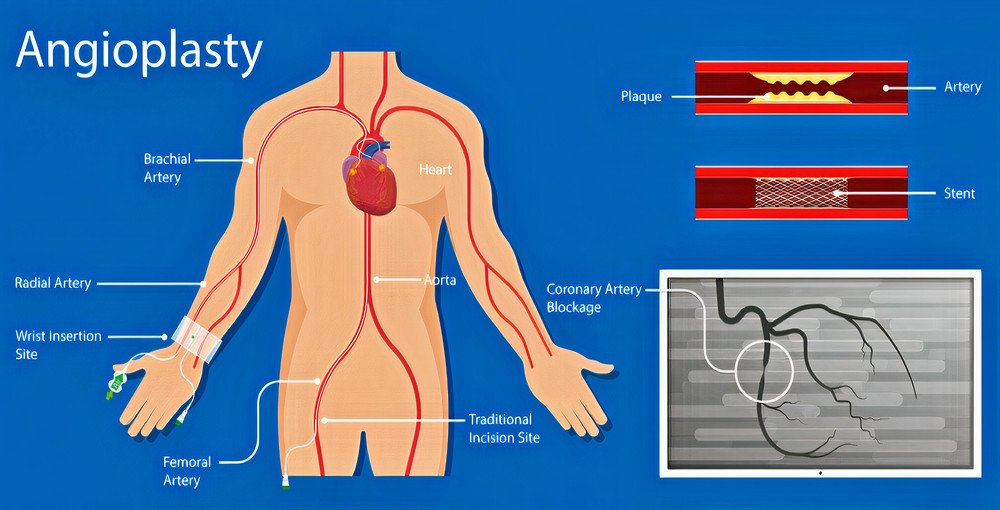3) Interventional procedures

Angioplasty (percutaneous transluminal angioplasty): It is a non-surgical procedure, in which, the physician inserts a catheter with a balloon attached to it through a large artery, such as the femoral artery, to reach the narrowed artery then inflate the balloon and dilate the artery. The doctor could set a stent inside the artery through the catheter to maintain patency if he wanted. Also, he can use the laser through the catheter to dissolve a clot. In acute ischemia, he can apply the thrombolytic therapy through the catheter.
Atherectomy is a subtype of angioplasty, in which the physician uses a cut blade through the catheter to remove the plaque.
- The doctor judges the need for angioplasty, according to:
- The site of the narrow or blocked artery
- The number of obstructed vessels
- The severity of the condition
- Angioplasty has advantages over surgical procedures, such as:
- Being less invasive (No major surgical incisions)
- Avoidance of general anesthesia and its side effects and risks; local anesthesia is enough
- Being a one-day procedure allows you can leave the hospital on the same day and return to your normal activities rapidly.
Angioplasty may have some side effects (such as injury of the catheter insertion site and damage of the artery of insertion), but these complications are so rare.
